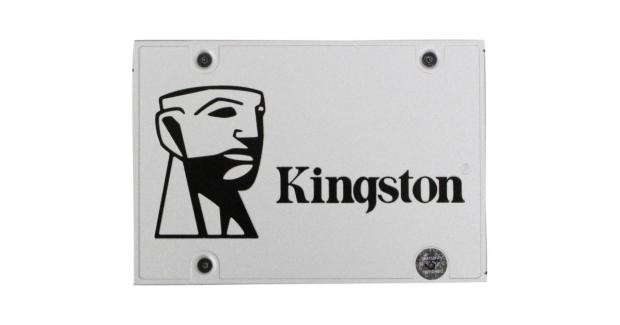
The Bottom Line
Introduction, Specifications, Pricing & Availability
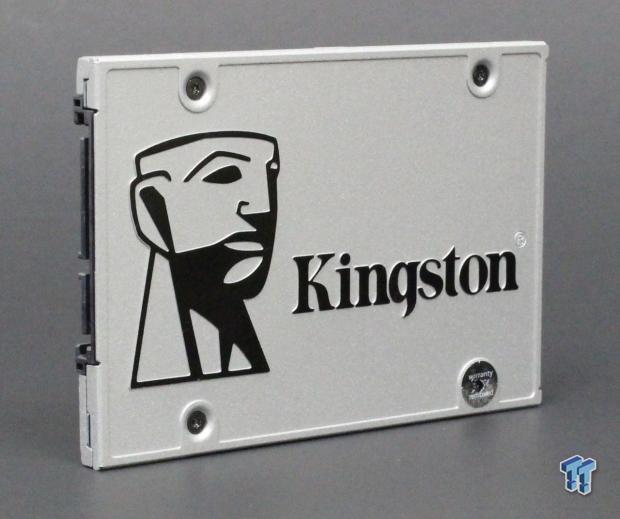
The fastest growing segment in solid state storage is the value segment. Kingston already has a significant presence in the value segment of the SSD market and are looking to expand their reach further with their new Ultra-Value SATA III SSD; the UV400. The value segment of the SSD market, like the name suggests, is focused on delivering cost-effective solid state storage to the masses. This segment of the market is much more focused on price than performance, while at the same time reaping the benefits that are inherent to solid state storage.
Kingston has tapped cost effective well-performing components for the UV400. At the heart of it all is Marvell's 88SS1074 4-channel flash controller. We've seen this versatile controller at the heart of several recently released SSDs. Marvel's 88SS1074 controller is essentially a blank slate. Marvell sells the controller and buyers provide their own custom firmware. Marvell's controller-only sales model means we don't see 88SS1074 controlled SSDs coming from small companies, but rather large companies that have firmware engineering teams, such as Crucial, Western Digital, and Kingston.
The UV400 pairs the Marvell 88SS1074 controller with super-low-cost Toshiba 15nm 3-bit planar flash in TSOP packages and an LPDDR3 cache package. By going with super-low-cost TSOP packaged flash, Kingston sacrifices performance for cost. The UV400 is not as fast as similarly configured SSDs that employ higher bus speed BGA packaged flash, but it is cheaper, and that's exactly what Kingston is aiming for. The UV400 is up to 10X faster than mechanical hard drives, it is silent, and uses far less power than a conventional HDD.
Kingston has grown into the world's largest independent manufacturer of memory products, and the UV400 is selling like hotcakes, now let's see how it performs.
Specifications

Kingston UV400 480GB SATA III SSD:
- Sequential Read: up to 550 MB/s
- Sequential Write: up to 500 MB/s
- Max 4K Random Read Speed: up to 90,000 IOPS
- Max 4K Random Write Speed: up to 50,000 IOPS
- Endurance: 200TBW
- MTTF: 1 Million Hours
- Warranty: 3-Year Limited Warranty
- Active Power Consumption: .693W Avg.
- SMART
- TRIM
- Garbage Collection
Kingston's UV400 480GB SATA III SSD is currently selling for $116 at Amazon and Newegg.
Drive Details
Kingston UV400 480GB SATA III SSD
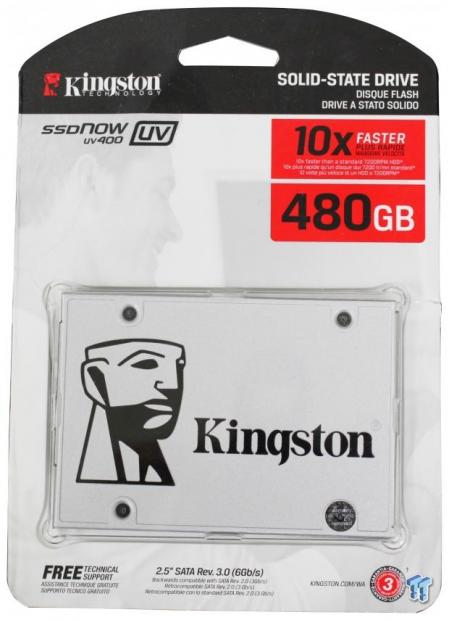
You can purchase the UV400 as either a complete upgrade kit that comes with everything under the sun or you can purchase it as a super-low-cost drive only blister pack. The drive itself is visible through the clear portion of the blister pack. This side of the packaging advertises the UV400's capacity, free technical support, three-year warranty, form factor, and interface.
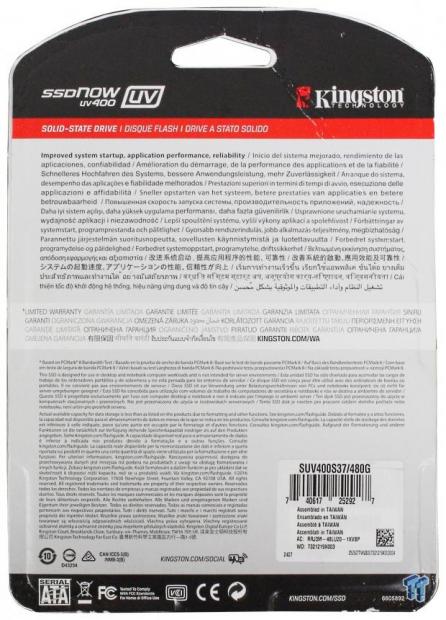
The rear of the packaging advertises some of the advantages users will get by going solid state over mechanical.
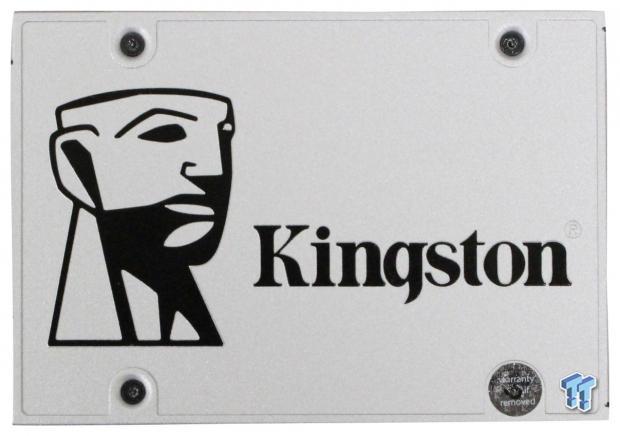
The UV400's enclosure is formed from high-quality aluminum alloy. The design is minimalistic and attractive.
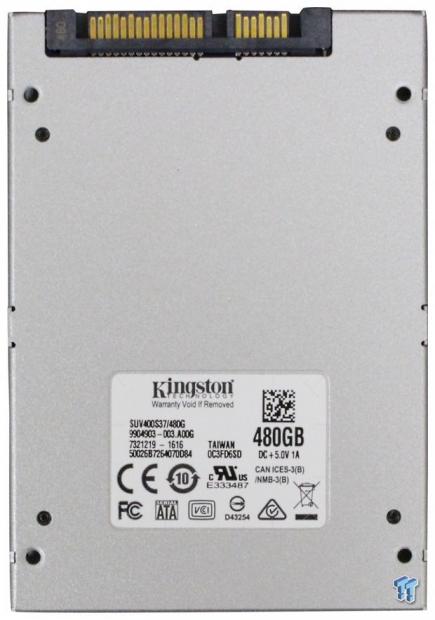
The bottom of the enclosure features a manufacturer's label listing the particulars of the drive.
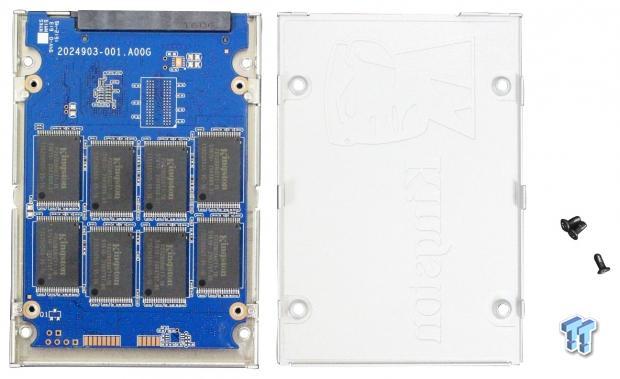
The enclosure is fastened together with four Torx security screws. The PCB is held in position by two locator pins.
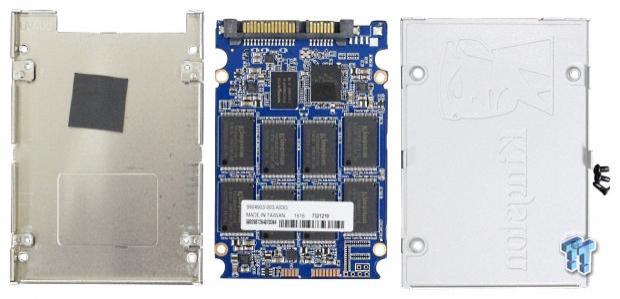
Kingston utilizes a thermal pad to wick heat from the drive's controller.
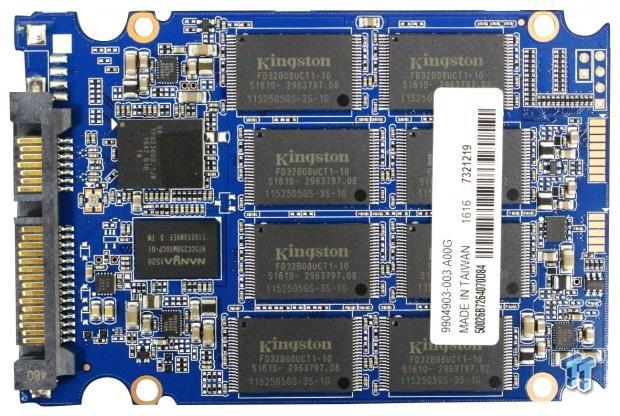
This half of the drive's blue PCB is populated by the drive's controller, eight flash packages, and a DRAM cache package.
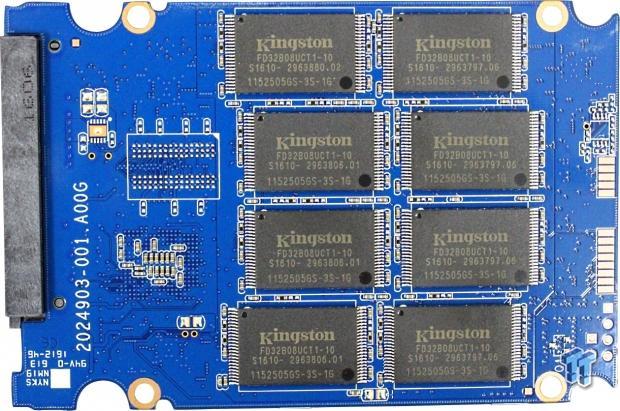
This half of the PCB is populated with an additional eight flash packages.
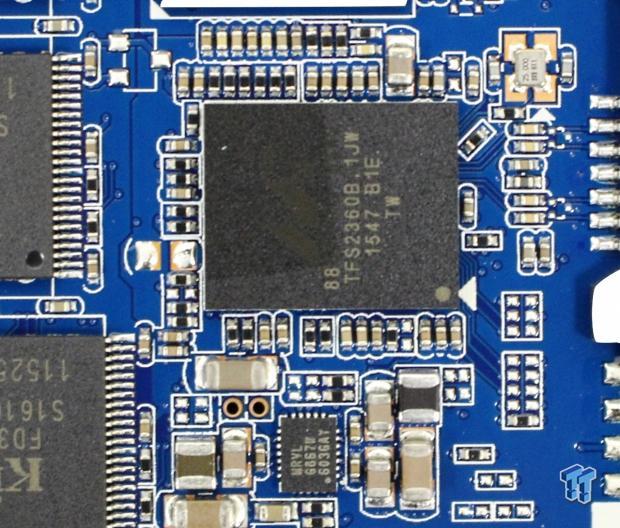
Above is the Marvell 88SS1074 4-channel controller that powers the UV400.
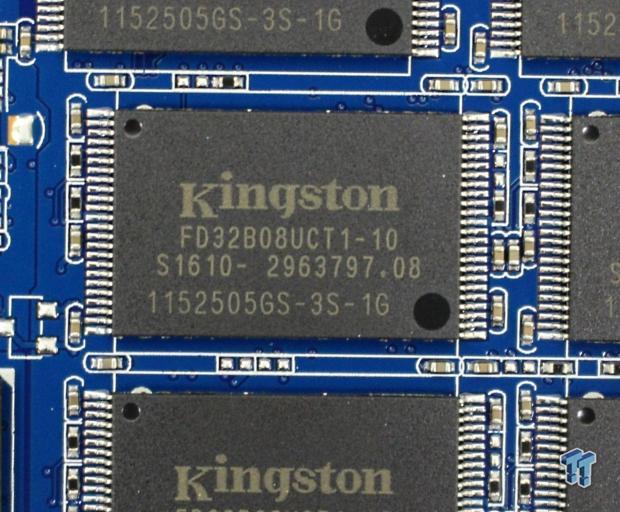
One of the sixteen Kingston branded 32GB TSOP Toshiba 15nm TLC flash packages that populate the PCB.
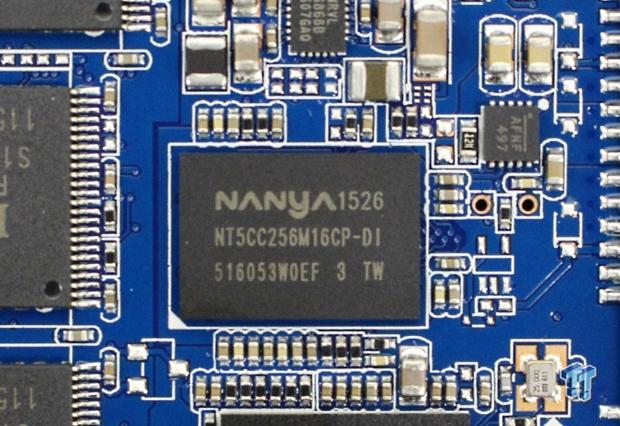
Above is the drive's Nanya branded 512MB LPDDR3 DRAM cache.
Test System Setup and Properties
Jon's Consumer SSD Review Test System Specifications
- Motherboard: ASRock Extreme9 Z97 - Buy from Amazon
- CPU: Intel Core i7 4790K @ 4.8GHz - Buy from Amazon / Read our review
- Cooler: Swiftech H2O-320 Edge - Buy from Amazon / Read our review
- Memory: Corsair Dominator DDR3 32GB 2400MHz - Buy from Amazon
- Video Card: Onboard Video
- Case: IN WIN X-Frame - Buy from Amazon / Read our review
- Power Supply: Seasonic Platinum 1000 Watt Modular - Buy from Amazon / Read our review
- OS: Microsoft Windows 10 Professional 64-bit - Buy from Amazon
- Drivers: Intel RAID option ROM version 13.0.0.2075 and Intel RST driver version 13.6.0.1002
We would like to thank ASRock, Crucial, Intel, Corsair, RamCity, IN WIN, and Seasonic for making our test system possible.
Drive Properties
Kingston UV400 480GB OS Disk 75% Full
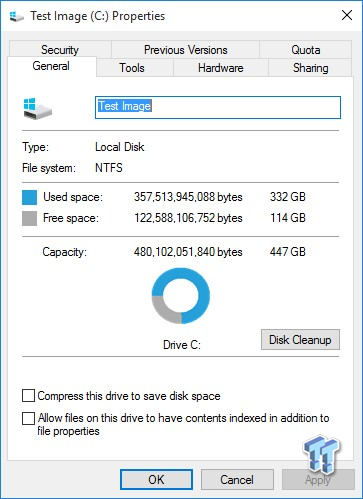
The majority of our testing is performed with our test drive as our boot volume. Our boot volume is 75% full for all OS Disk "C" drive testing to replicate a typical consumer OS volume implementation. We feel that most of you will be utilizing your SSDs for your boot volume and that presenting you with results from an OS volume is more relevant than presenting you with empty secondary volume results.
System settings: Cstates and Speed stepping are both disabled in our systems BIOS. Windows High-Performance power plan is enabled. Windows write caching is enabled, and Windows buffer flushing is disabled. We are utilizing Windows 10 Pro 64-bit OS for all of our testing except for our MOP (Maxed-Out Performance) benchmarks where we switch to Windows Server 2008 R2 64-bit. Empty Windows 10 benchmark screenshots will also be shown on our MOP page.
Synthetic Benchmarks – ATTO & Anvil's
ATTO
Version and / or Patch Used: 2.47
ATTO is a timeless benchmark used to provide manufacturers with data used for marketing storage products. With ATTO, we are looking at maximum sequential performance with compressible data.
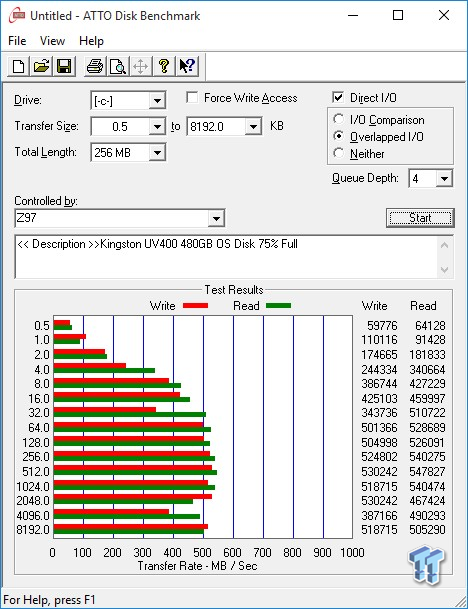
Compressible sequential read/write transfers max out at 547/530 MBs. Keep in mind this is our OS volume, and it is filled to 75% of its total capacity. Performance gets a bit choppy when the drive is loaded up with data. Maximum sequential performance is achieved at 512KB transfers.
Sequential Write
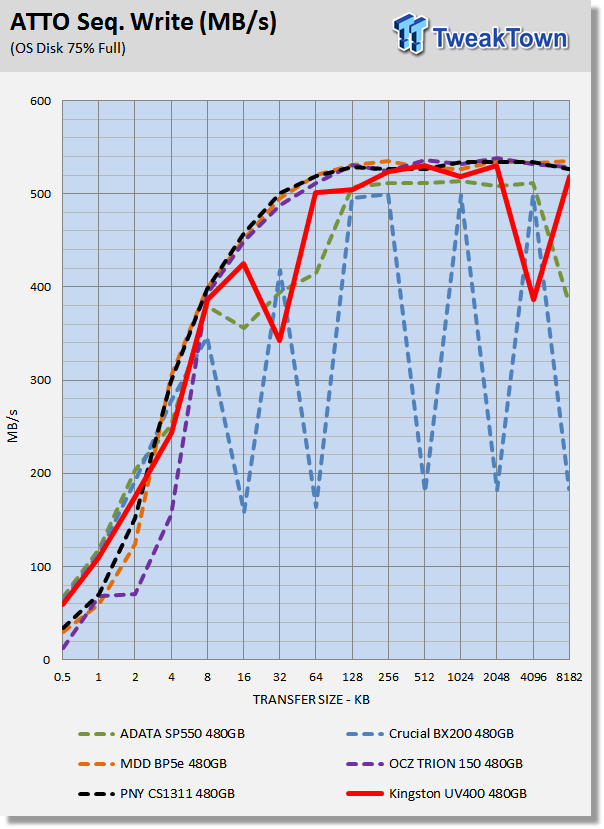
The UV400 displays choppy write performance when the drive is loaded up with data. This is common behavior for many planar TLC SSDs; the BX200 is an extreme example of choppy write performance. Overall, the UV400 is running in the middle of our test pool.
Sequential Read
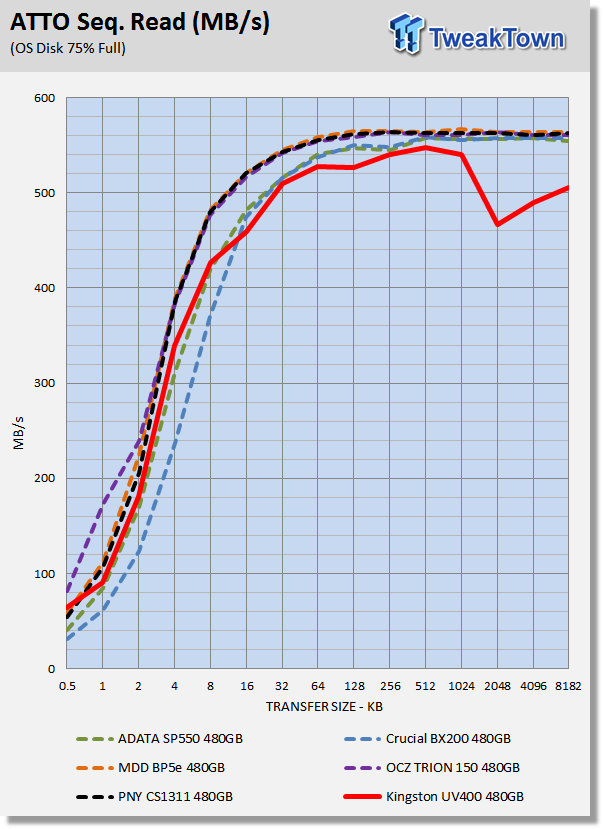
Read performance smooths out somewhat, but it is still a bit choppy for our liking. The UV400 runs in the middle of the pack up to 4KB transfers. Beyond 4KB transfers, the UV400 is outperformed by the rest of the test pool.
Anvil Storage Utilities
Version and / or Patch Used: 1.1.0
Anvil's Storage Utilities is a storage benchmark designed to measure the storage performance of SSDs. The Standard Storage Benchmark performs a series of tests; you can run a full test or just the read or write test, or you can run a single test, i.e. 4k QD16. With Anvil's, we are focused on the total score.
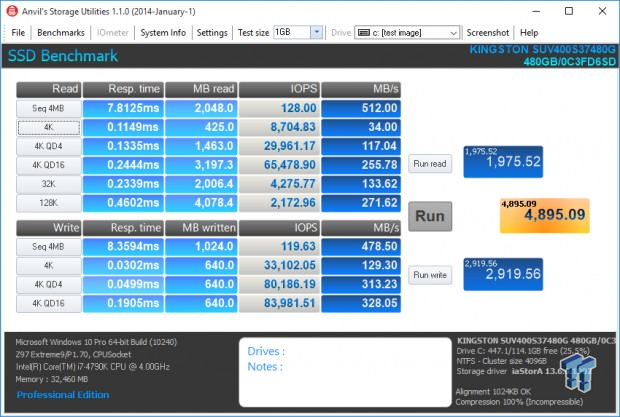
Scoring
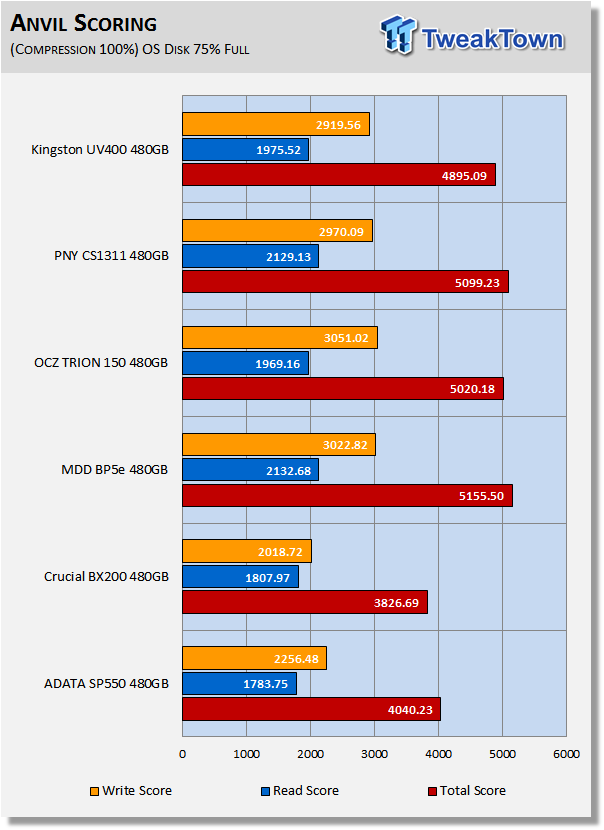
Anvil's scoring typically provides us with a good indication of a drive's overall synthetic performance. The UV400 returns a good overall score. We want to see a score of 4,500 or higher from a planar TLC drive - the UV400 scores almost 4,900.
(Anvil) Read IOPS through Queue Depth Scale
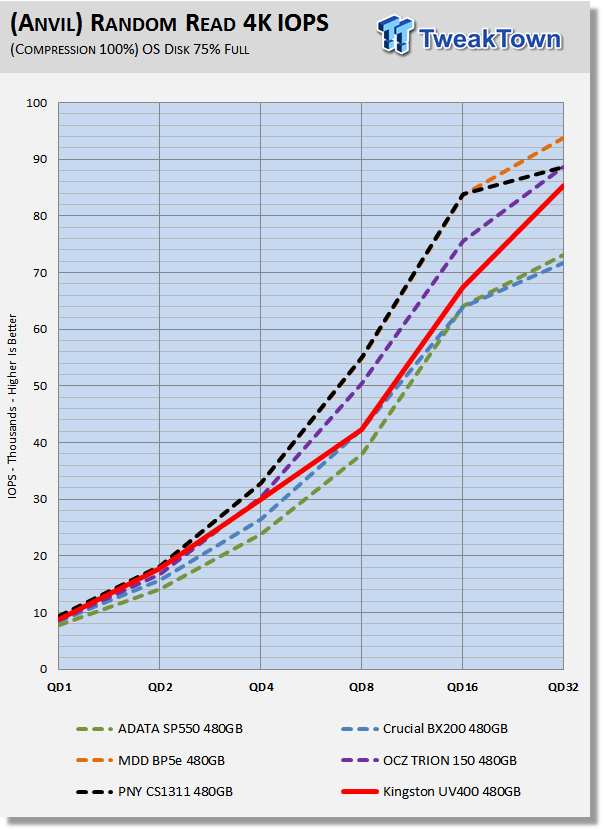
The UV400 outperforms the BX200 and the SP550. The Phison S10-powered drives in our test pool easily outperform the UV400.
(Anvil) Write IOPS through Queue Scale
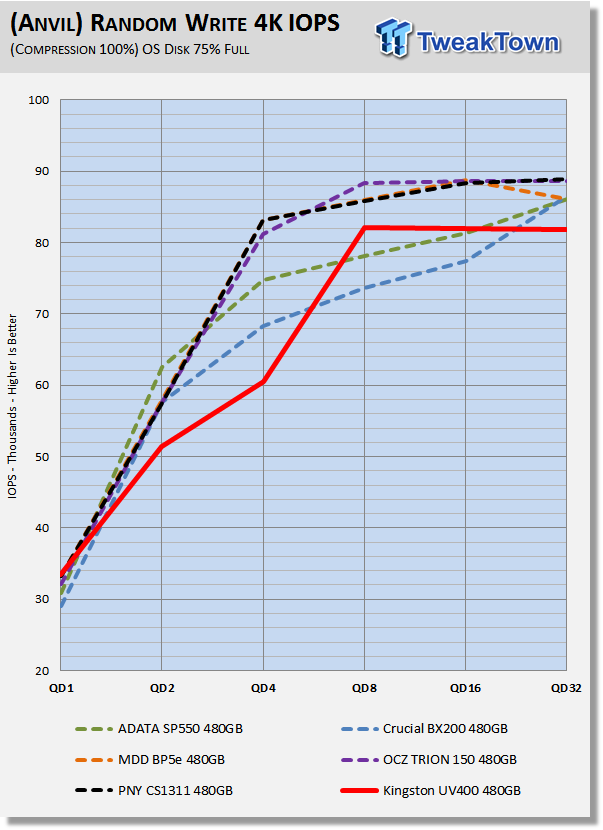
At first glance, the UV400 looks to be the losing across the board. However, if we take a close look at the UV400 at QD1, we see that the UV400 is delivering the best QD1 performance of the bunch. We consider QD1 performance to be the most important of all the queue depths measured.
Synthetic Benchmarks – CDM & AS SSD
CrystalDiskMark
Version and / or Patch Used: 3.0 Technical Preview
CrystalDiskMark is disk benchmark software that allows us to benchmark 4k and 4k queue depths with accuracy. Note: Crystal Disk Mark 3.0 Technical Preview was used for these tests since it offers the ability to measure native command queuing at QD4. With this version of CDM, we are focused on 4K random performance at QD1 and QD4.
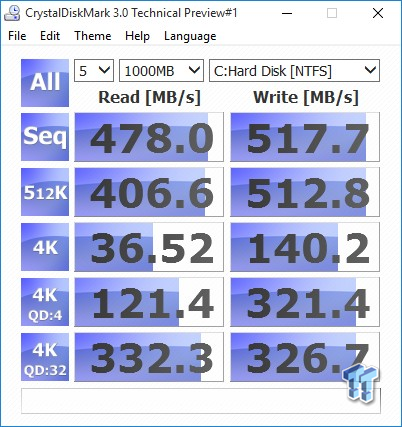
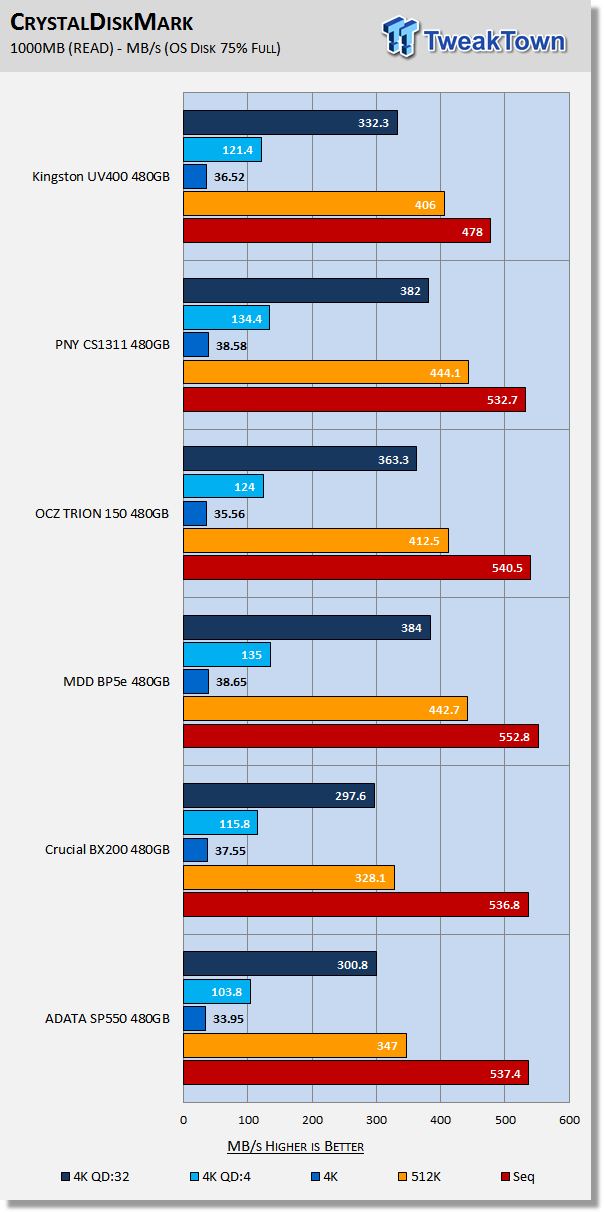
The UV400 performs as we would expect to see from a value drive. When we focus in on 4K QD1, the UV400 outperforms three of the six drives in our test pool. At QD4 and QD32, the UV400 winds up in fourth place.
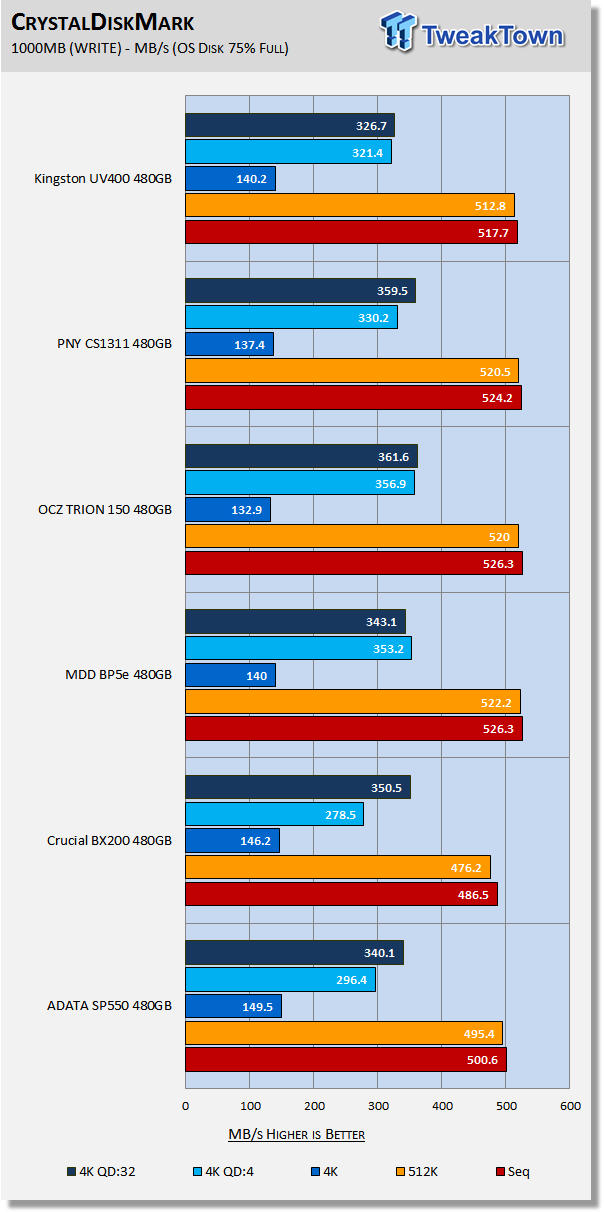
At QD1, the UV400 exacts a bit of revenge upon the S10-powered drives in our test pool. At QD4, the UV400 performs better than the BX200 and the SP550.
AS SSD
Version and / or Patch Used: 1.8.5611.39791
AS SSD determines the performance of SSDs. The tool contains four synthetic as well as three practice tests. The synthetic tests are to determine the sequential and random read and write performance of the SSD. We focus on total score when running AS SSD.
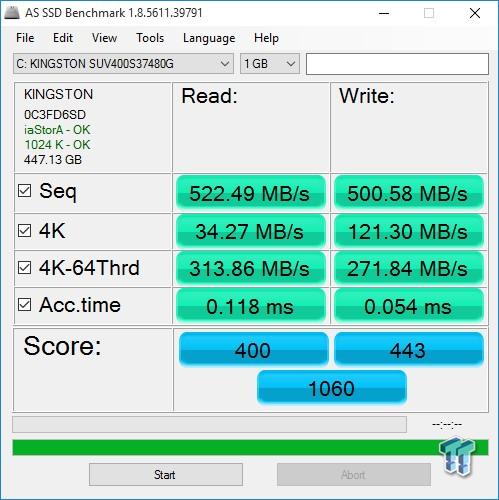
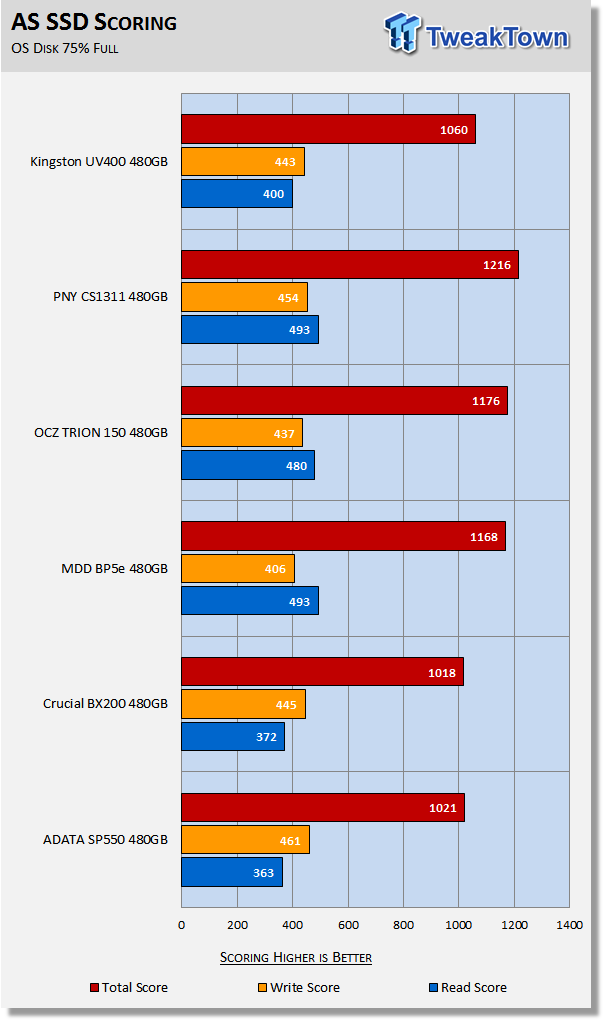
AS SSD is a demanding test. With AS SSD we are looking for a minimum score of 1000 from a planar TLC SSD. The UV400 gives us what we are looking for. It defeats the BX200 and the SP550, but it is soundly defeated by the S10-powered drives in our test pool.
Benchmarks (Trace, OS Volume) - Vantage, PCMark 7 & PCMark 8
Moderate Workload Model
We categorize these tests as indicative of a moderate workload environment.
PCMark Vantage - Hard Disk Tests
Version and / or Patch Used: 1.2.0.0
The reason we like PCMark Vantage is because the recorded traces are played back without system stops. What we see is the raw performance of the drive. This allows us to see a marked difference between scoring that other trace-based benchmarks do not exhibit. An example of a marked difference in scoring on the same drive would be empty vs. filled vs. steady state.
We run Vantage three ways. The first run is with the OS drive 75% full to simulate a lightly used OS volume filled with data to an amount we feel is common for most users. The second run is with the OS volume written into a "Steady State" utilizing SNIA's guidelines. Steady state testing simulates a drive's performance similar to that of a drive that been subjected to consumer workloads for extensive amounts of time. The third run is a Vantage HDD test with the test drive attached as an empty, lightly used secondary device.
OS Volume 75% Full - Lightly Used
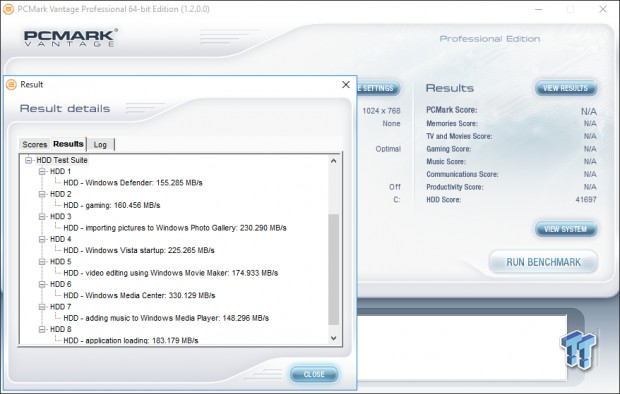
OS Volume 75% Full - Steady State
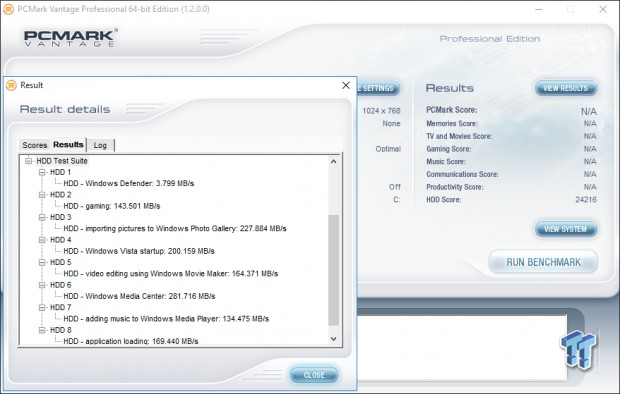
Secondary Volume Empty - FOB
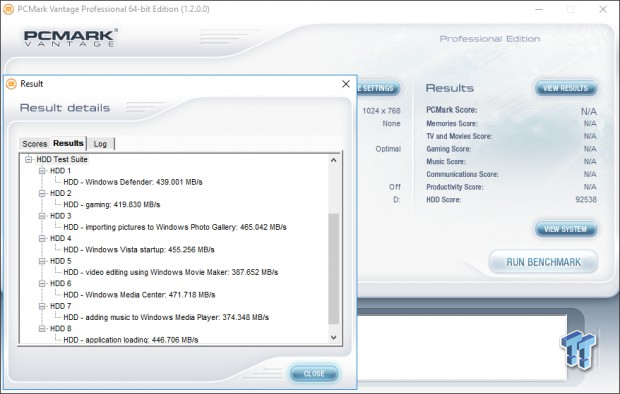
There's a big difference between an empty drive, one that's 75% full/used, and one that's in a steady state.
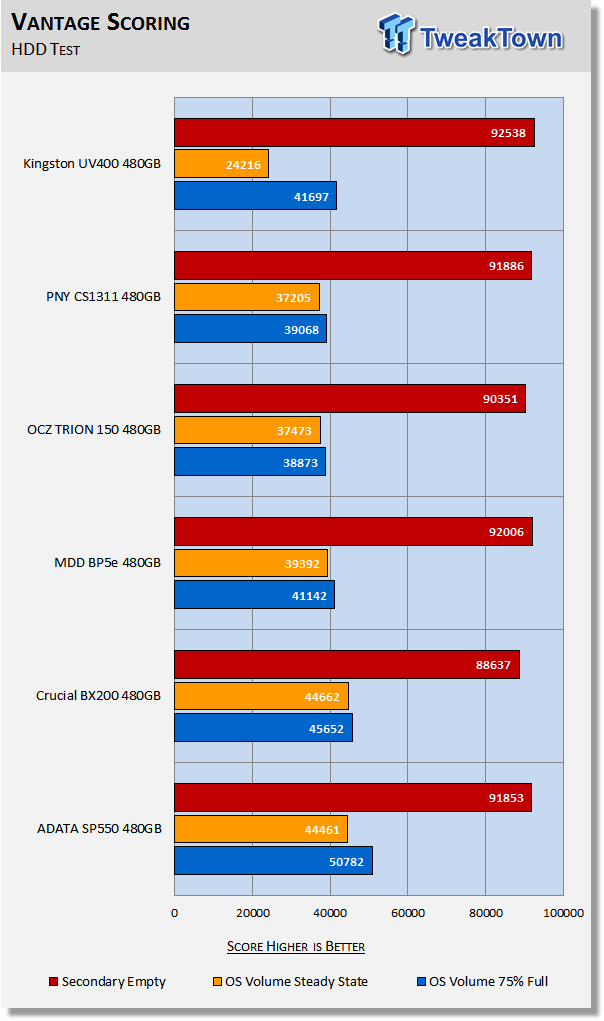
The important scores to pay attention to are "OS Volume Steady State" and "OS Volume 75% full." These two categories are most important because they are indicative of typical of consumer user states. When a drive is in a steady state, it means garbage collection is running at the same time it's reading/writing. This is exactly why we focus on steady state performance.
When empty, the UV400 scores higher than the rest of our test pool. As we drop down to 75% full and lightly used, the UV400 performs third best. However, when we get to steady state, the UV400 falls to dead last.
PCMark 7 - System Storage
Version and / or Patch Used: 1.4.0
We will look to Raw System Storage scoring for evaluation because it's done without system stops and, therefore, allows us to see significant scoring differences between drives.
OS Volume 75% Full - Lightly Used
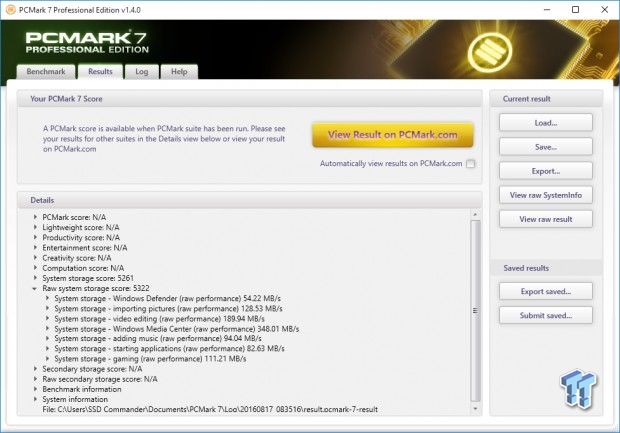
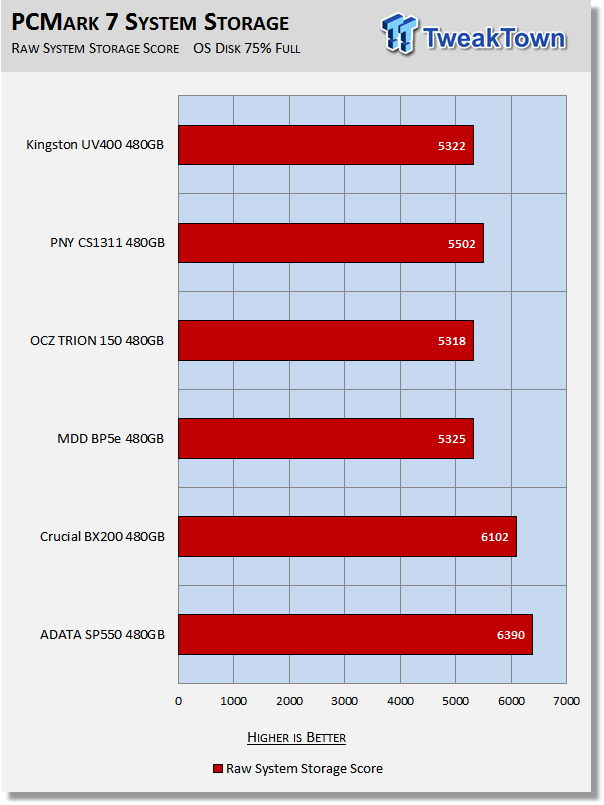
The UV400 performs in a similar fashion to the S10-powered drives in our test pool, all of which are outperformed by the BX200 and SP550.
PCMark 8 - Storage Bandwidth
Version and / or Patch Used: 2.4.304
We use PCMark 8 Storage benchmark to test the performance of SSDs, HDDs, and hybrid drives with traces recorded from Adobe Creative Suite, Microsoft Office, and a selection of popular games. You can test the system drive or any other recognized storage device, including local external drives. Unlike synthetic storage tests, the PCMark 8 Storage benchmark highlights real-world performance differences between storage devices. We focus on the total storage bandwidth when evaluating PCMark 8 results.
OS Volume 75% Full - Lightly Used
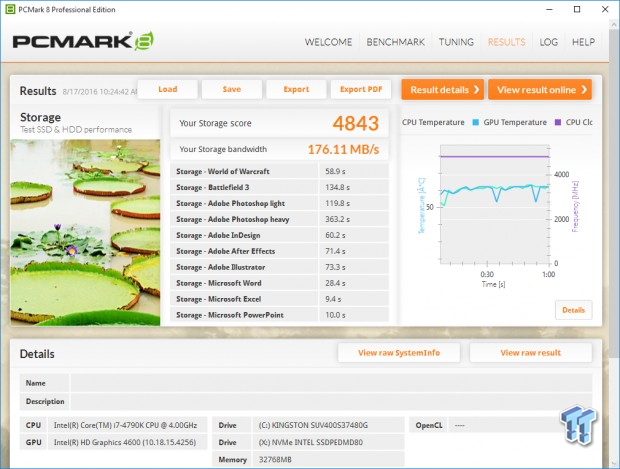
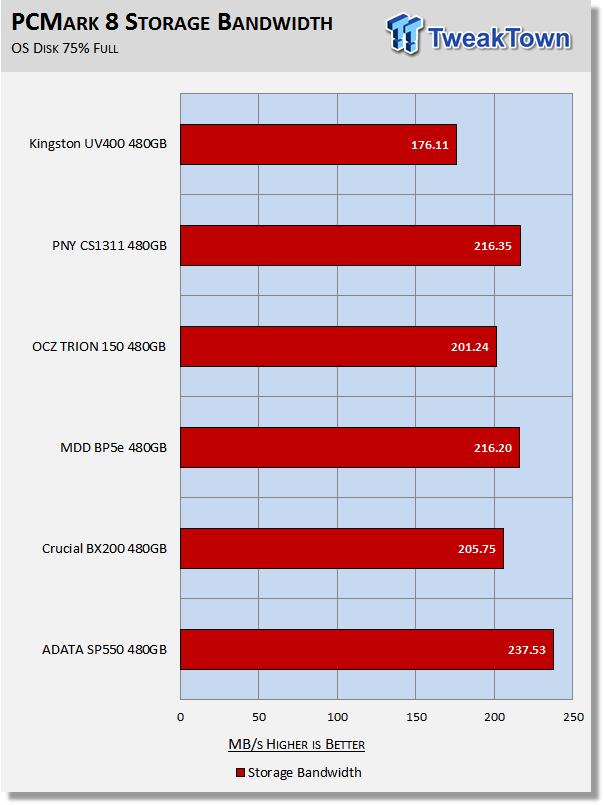
PCMark 8 is the most intensive moderate workload simulation we run. With respect to moderate workloads, this test is what we consider the best indicator of a drive's overall performance. PCMark 8's heavier workload hammers the UV400 into last place.
Benchmarks (Secondary) – IOPS, Response & Transfers
Iometer – Maximum IOPS
Version and / or Patch Used: Iometer 2014
We use Iometer to measure high queue depth performance. (No Partition)
Max IOPS Read
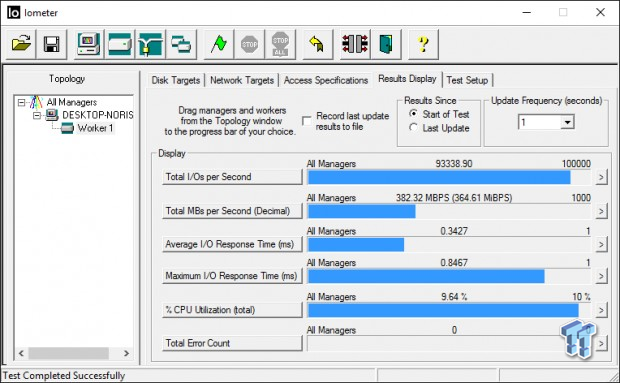
Max IOPS Write
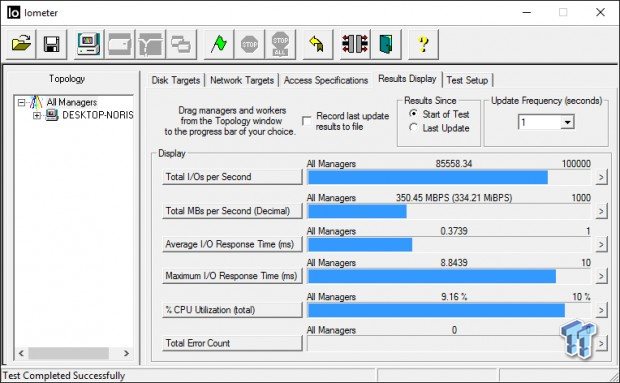
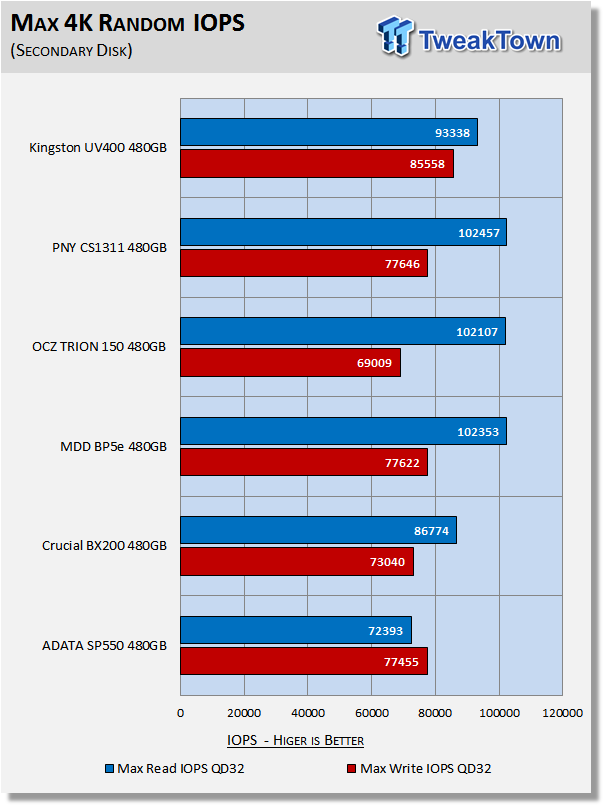
The UV400 outperforms its factory specs considerably. Looking at write IOPS, we are getting 35K more IOPS than specified by Kingston. This leads us to believe that Kingston is giving us the specs for a preconditioned SSD.
This is admirable on their part. However, other manufacturers typically do not give maximum IOPS specifications on a preconditioned drive. Kingston may be selling themselves a bit short in this regard.
Iometer – Disk Response
Version and / or Patch Used: Iometer 2014
We use Iometer to measure disk response times. Disk response times are measured at an industry accepted standard of 4K QD1 for both write and read. Each test runs twice for 30 seconds consecutively, with a 5-second ramp-up before each test. We partition the drive/array as a secondary device for this testing.
Avg. Write Response
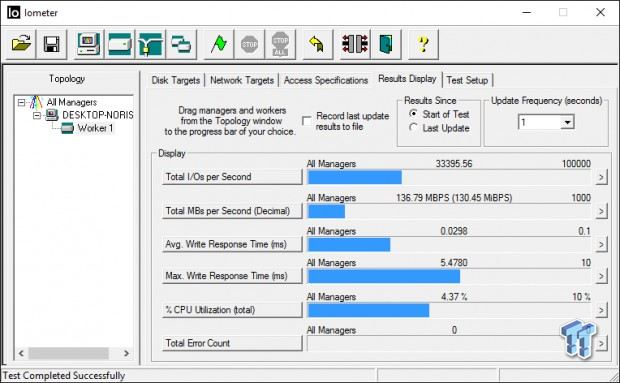
Avg. Read Response
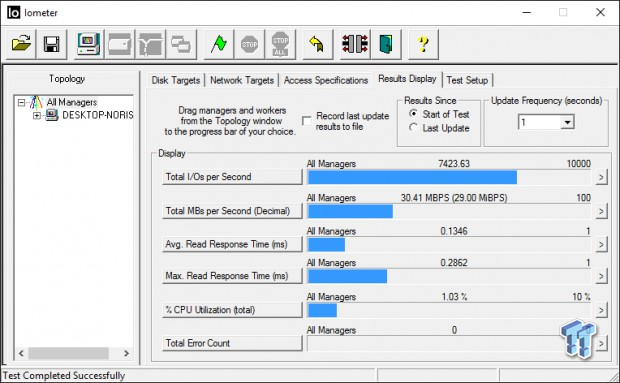
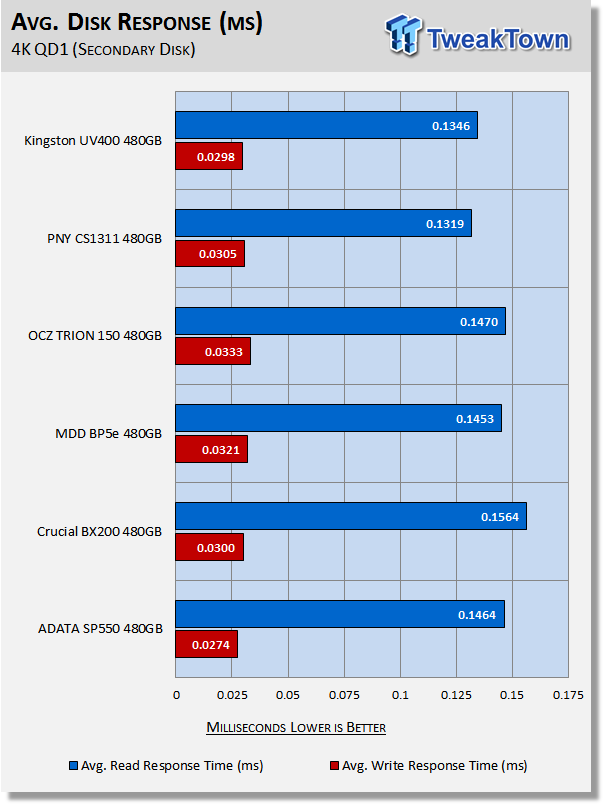
The UV400 does quite well with this testing. It delivers the second-best read response and the second-best write response. Overall, this is a win for the UV400.
DiskBench - Directory Copy
Version and / or Patch Used: 2.6.2.0
We use DiskBench to time a 28.6GB block (9,882 files in 1,247 folders) composed primarily of incompressible sequential and random data as it's transferred from our DC P3700 PCIe NVME SSD to our test drive. We then read from a 6GB zip file that's part of our 28.6GB data block to determine the test drive's read transfer rate. Our system is restarted prior to the read test to clear any cached data, ensuring an accurate test result.
Write Transfer Rate
Windows 10
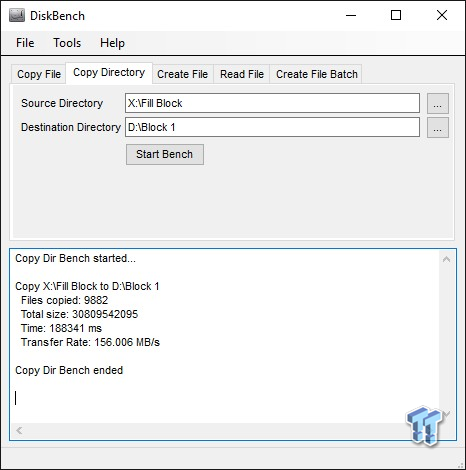
Server 2008
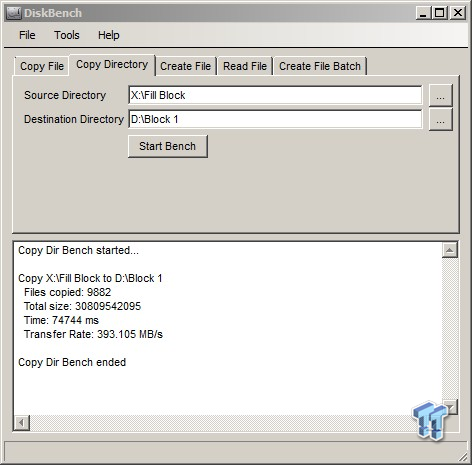
Read Transfer Rate
Windows 10

Server 2008

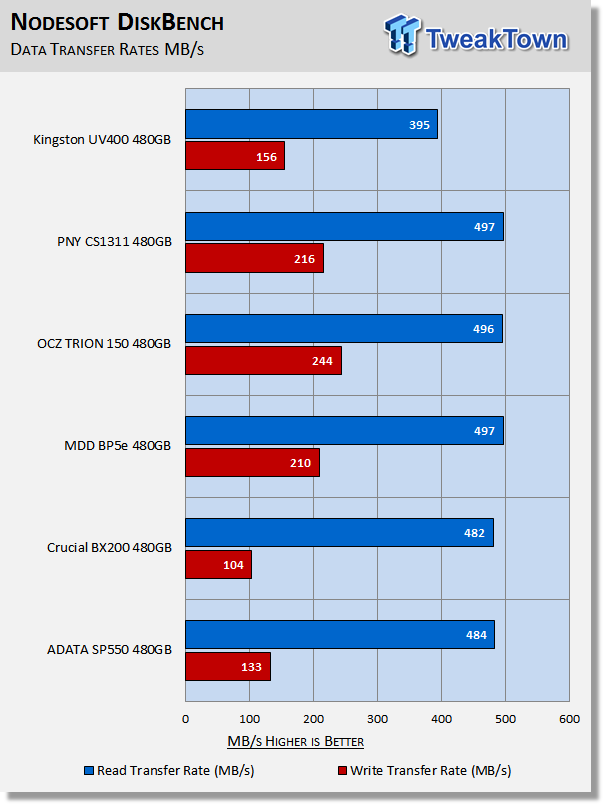
When testing write transfer rates, we have a rule of thumb. If any SSD cannot achieve 200 MB/s with our write transfer test, that SSD will not receive a TweakTown recommendation. Quite a few SSDs have not been able to pass our litmus test. The UV400 did not deliver us our 200 MB/s minimum. This had us scratching our heads, mainly because other Marvell 88SS1074 controlled SSDs we've tested have all passed with flying colors.
Because of this, we decided to see what would happen when we ran this test on Server 2008 as part of our MOP testing. Much to our surprise, the UV400 delivered a sustained write transfer rate of 393 MB/s. We are at a loss as to why the UV400 delivers a 2.5x better write transfer rate on Server 2008, but because it does so, we will not disqualify the UV400 from receiving a TweakTown recommendation based on our 200 MB/s rule of thumb.
Benchmarks (Secondary) – PCMark 8 Extended
Futuremark PCMark 8 Extended
Heavy Workload Model
PCMark 8's consistency test simulates an extended duration heavy workload environment. PCMark 8 has built-in, command line executed storage testing. The PCMark 8 Consistency test measures the performance consistency and the degradation tendency of a storage system.
The Storage test workloads are repeated. Between each repetition, the storage system is bombarded with a usage that causes degraded drive performance. In the first part of the test, the cycle continues until a steady degraded level of performance has been reached. (Steady State)
In the second part, the recovery of the system is tested by allowing the system to idle and measuring the performance after 5-minute long intervals. (Internal drive maintenance: Garbage Collection (GC)) The test reports the performance level at the start, the degraded steady-state, and the recovered state, as well as the number of iterations required to reach the degraded state and the recovered state.
We feel Futuremark's Consistency Test is the best test ever devised to show the true performance of solid state storage in an extended duration heavy workload environment. This test takes on average 13 to 17 hours to complete and writes somewhere between 450GB and 14,000GB of test data depending on the drive. If you want to know what an SSDs steady state performance is going to look like during a heavy workload, this test will show you.
Here's a breakdown of Futuremark's Consistency Test:
Precondition phase:
1. Write to the drive sequentially through up to the reported capacity with random data.
2. Write the drive through a second time (to take care of overprovisioning).
Degradation phase:
1. Run writes of random size between 8*512 and 2048*512 bytes on random offsets for 10 minutes.
2. Run performance test (one pass only).
3. Repeat 1 and 2 for 8 times, and on each pass increase the duration of random writes by 5 minutes.
Steady state phase:
1. Run writes of random size between 8*512 and 2048*512 bytes on random offsets for 50 minutes.
2. Run performance test (one pass only).
3. Repeat 1 and 2 for 5 times.
Recovery phase:
1. Idle for 5 minutes.
2. Run performance test (one pass only).
3. Repeat 1 and 2 for 5 times.
Storage Bandwidth
PCMark 8's Consistency test provides a ton of data output that we use to judge a drive's performance.
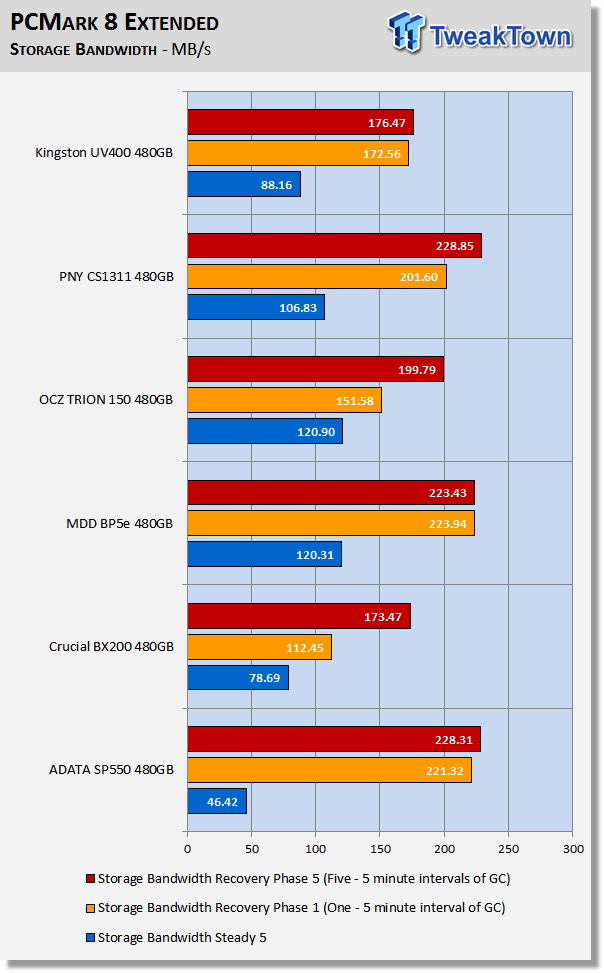
We consider steady state bandwidth (the blue bar) our test that carries the most weight in ranking a drive/arrays heavy workload performance. Performance after Garbage Collection (GC) (the orange and red bars) is what we consider the second most important consideration when ranking a drive's performance. Trace-based steady state testing is where true high performing SSDs are separated from the rest of the pack.
As we've seen, the UV400 is not a moderate workload powerhouse. As expected, it is also not a heavy workload powerhouse either. However, it does deliver surprisingly decent heavy workload steady state performance for a value driven piece of hardware.
Bandwidth at Test Phase
We chart our test subject's storage bandwidth as reported at each of the test's 18 trace iterations. This gives us a good visual perspective of how our test subjects perform as testing progresses. This chart sheds more light on how the drives perform as they progress through the testing phases.
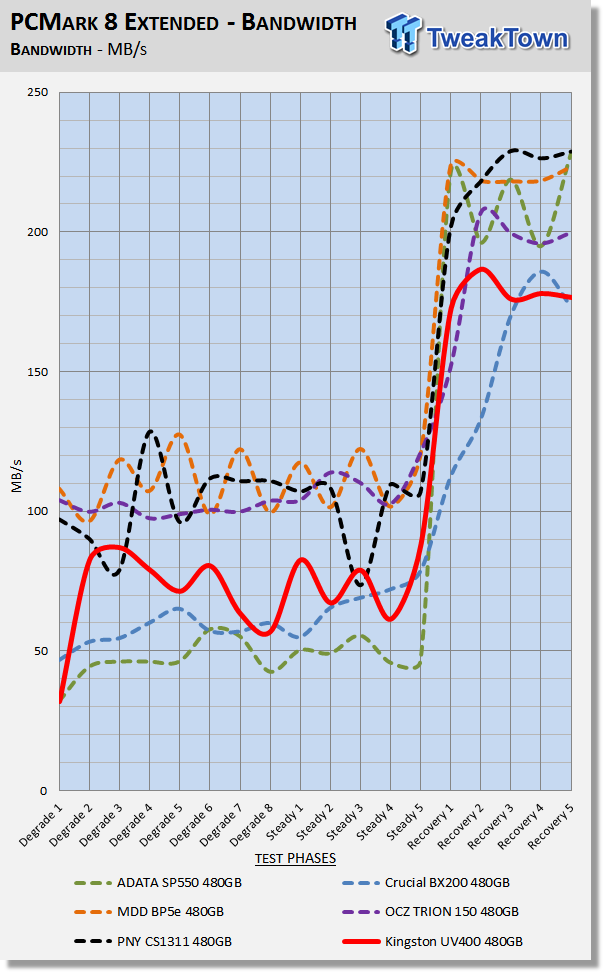
The UV400 outperforms the SP550 and BX200 for the majority of the test phases.
Total Access Time (Latency)
We chart the total time the disk is accessed as reported at each of the test's 18 trace iterations.
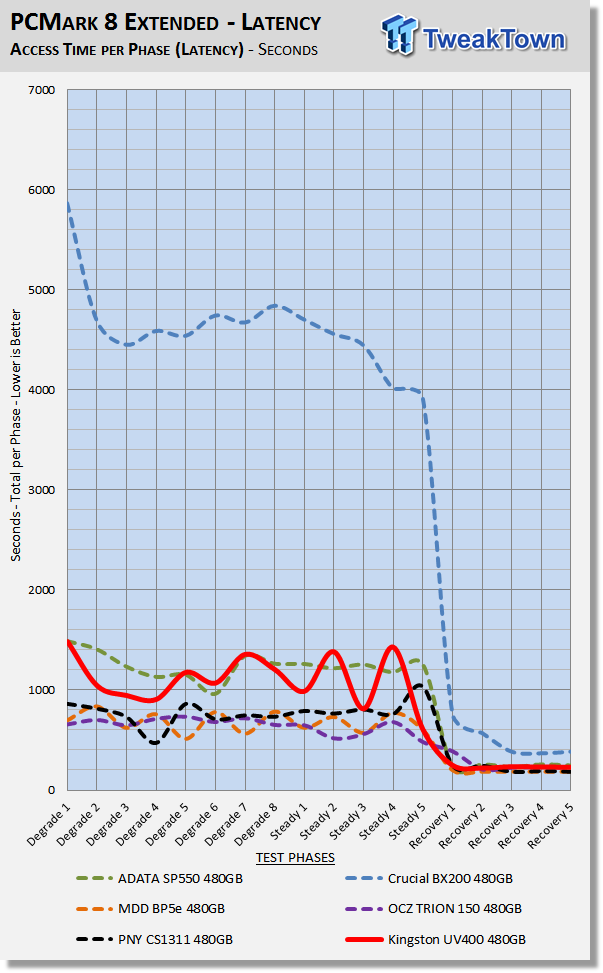
Low latency translates to the real-world as snappiness.
Disk Busy Time
Disk Busy Time is how long the disk is busy working. We chart the total time the disk is working as reported at each of the tests 18 trace iterations.
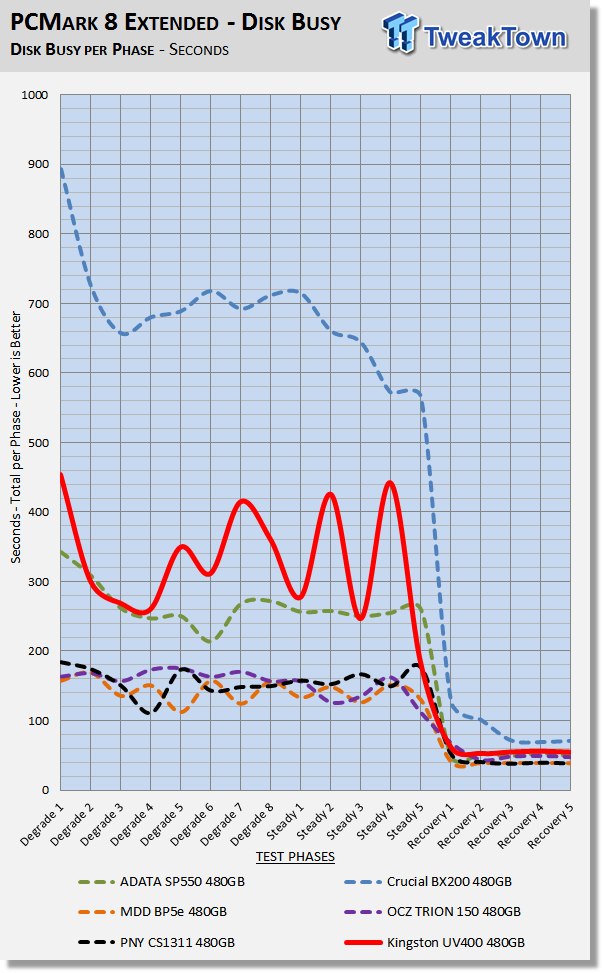
When latency is low, disk busy time is low as well.
Data Written
We measure the total amount of random data that our test drive/array is capable of writing during the degradation phases of the consistency test. Pre-conditioning data is not included in the total. The total combined time that degradation data is written to the drive/array is 470 minutes. This can be very telling. The better a drive/array can process a continuous stream of random data; the more data will be written.
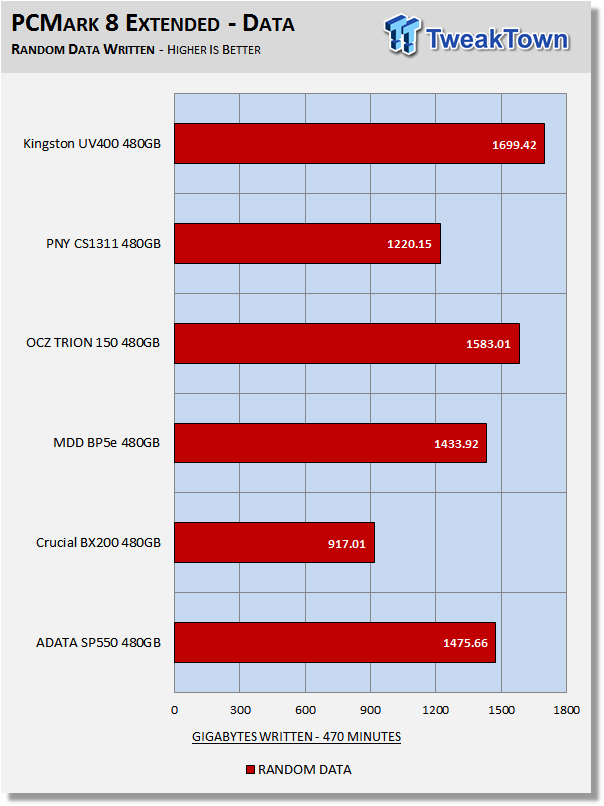
Overprovisioning and write latency are the biggest factors that determine the outcome of this portion of the test. This is a win for the UV400. It writes more random data in the same period than the competing drives in our test pool.
Benchmarks (Secondary) – 70/30 Mixed Workload
70/30 Mixed Workload Test (Sledgehammer)
Version and / or Patch Used: Iometer 2014
Heavy Workload Model
This test hammers a drive so hard we've dubbed it "Sledgehammer." Our 70/30 Mixed Workload test is designed to simulate a heavy-duty enthusiast/workstation steady-state environment. We feel that a mix of 70% read/30% write, full random 4K transfers best represents this type of user environment. Our test allows us to see the drive enter into and reach a steady state as the test progresses.
Phase one of the test preconditions the drive for 1 hour with 128K sequential writes. Phase two of the test runs a 70% read/30% write, full random 4K transfer workload on the drive for 1 hour. We log and chart (phase two) IOPS data at 5-second intervals for 1 hour (720 data points). 60 data points = 5 minutes.
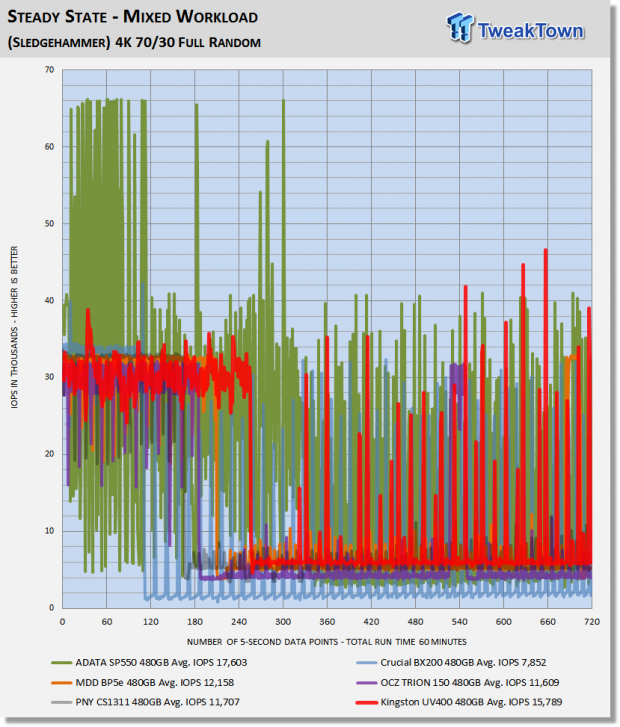
What we like about this test is that it reflects reality. Everything lines up, as it should. Consumer drives don't outperform Enterprise-Class SSDs that were designed for enterprise workloads. Consumer drives based on old technology are not outperforming modern Performance-Class SSDs, etc.
The UV400 snags second place with a 15K average IOPS performance. This backs up the results of our previous test, showing that the UV400 is a decent performer when running heavy workloads. The ADATA SP550 takes the win but displays massive variability while doing so.
Maxed-Out Performance (MOP)
This testing is just to see what the drive is capable of in an FOB (Fresh Out of Box) state under optimal conditions. We are utilizing empty volumes of Windows 10 and Windows Server 2008 R2 64-bit for this testing.
Windows 10 MOP
Kingston UV400 480GB
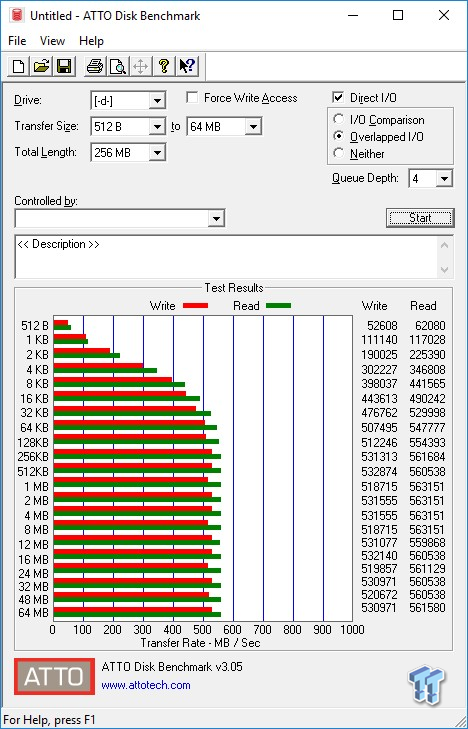
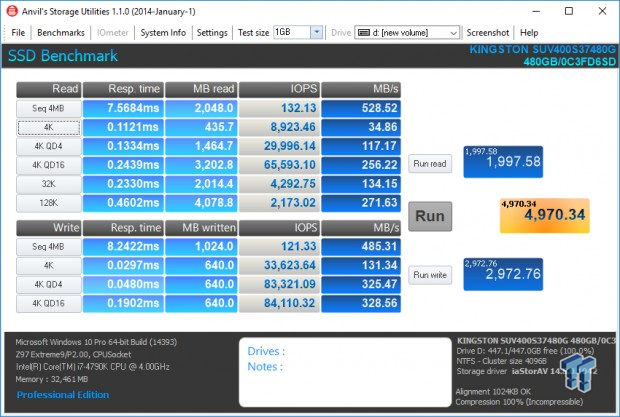

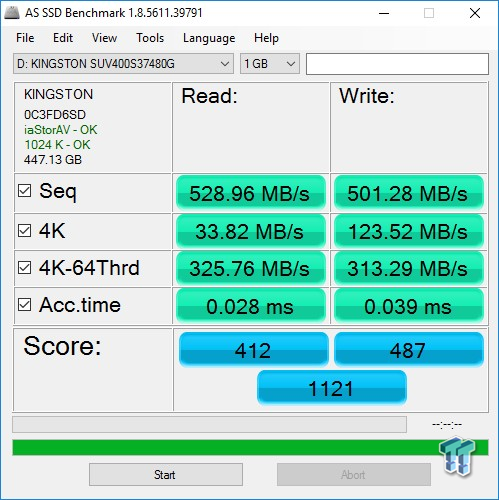
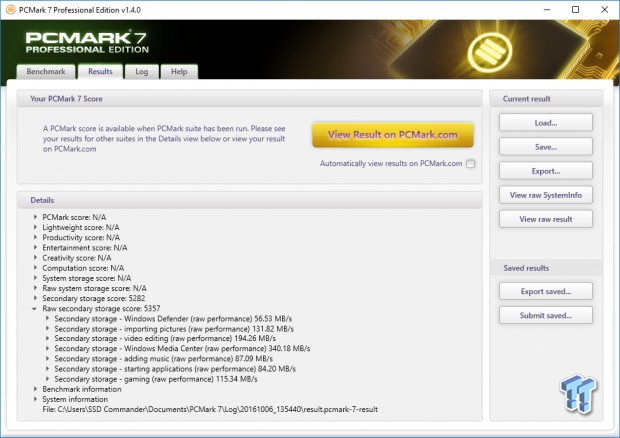
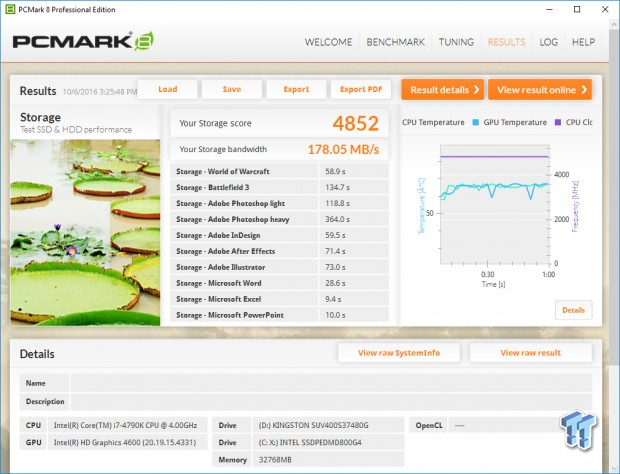
Windows Server 2008 R2 MOP
Kingston UV400 480GB
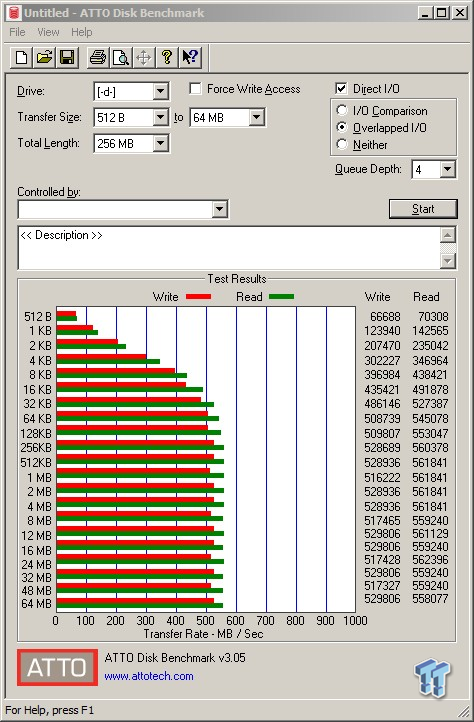
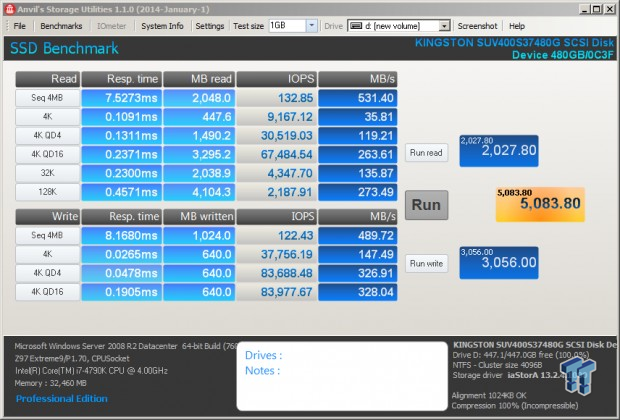
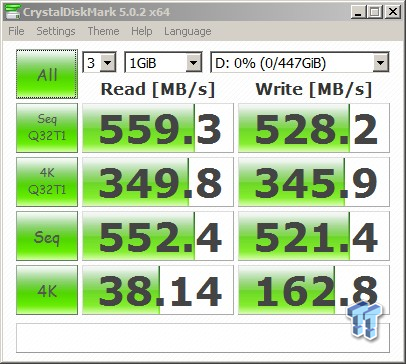
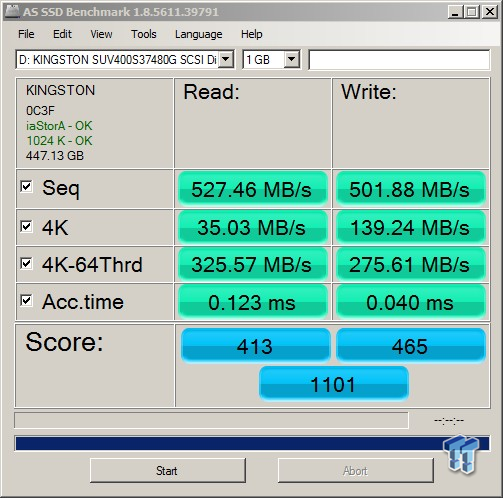

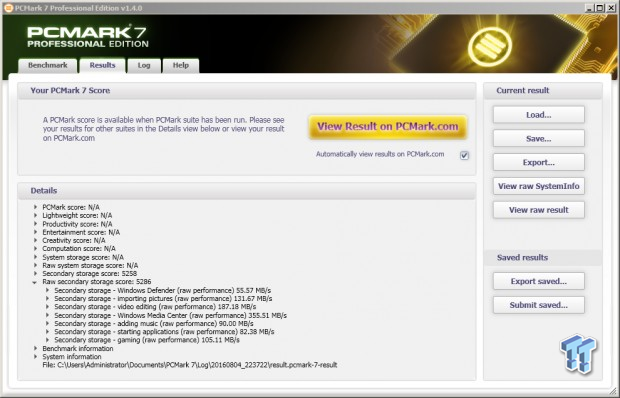
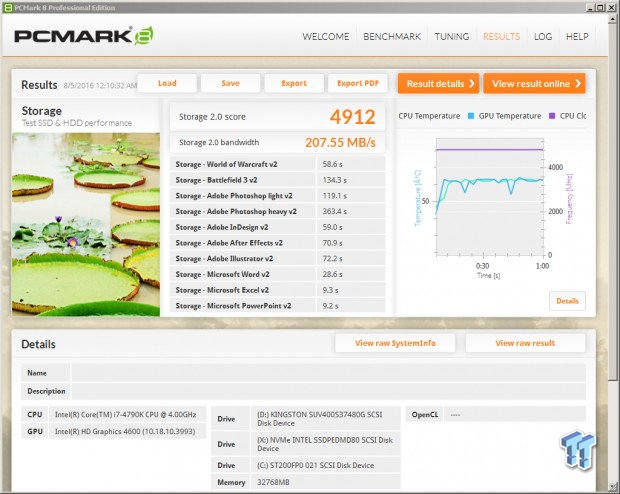
Final Thoughts
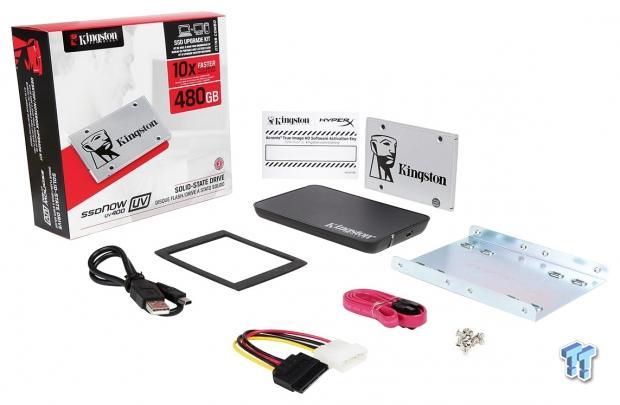
As expected, the UV400 didn't light up any of our charts. Regarding performance, we don't have a lot to point to as a reason why you would want to choose the UV400 over competing solutions. However, when we look at the overall value proposition that the UV400 has to offer, it is indeed an entry-level SSD that deserves a close look.
Kingston's UV400 480GB SATA III SSD is one of the lowest cost SSDs on the market. The build quality of the UV400 is excellent. The drive has an all-metal enclosure that is both attractive and substantial. Marvell's 88SS1074 controller is a quality component as is the Toshiba 15nm TLC flash array that populates the drive's PCB. Additionally, Kingston is trusted brand that will be there for you should you need assistance.
Because of its low cost, the UV400 is an attractive option as a drive only blister pack, but we feel it is a far more attractive option when purchased as a bundled upgrade kit. As depicted in the image above, the UV400 bundle comes with everything you could need to upgrade your desktop or laptop computer. For a mere $10 more, you get cloning software, a USB 3.0 enclosure, desktop adapter tray, SATA cable, spacer, and a SATA to Molex power cable. The included USB 3.0 enclosure alone makes the bundle worth it. We have several of these enclosures here at the lab one of which is currently being used to deliver faster storage on an Xbox.
The SSD experience that the UV400 offers is what you would expect from a value SSD. It is an order of magnitude better than any mechanical HDD, but not on the level of say a HyperX Savage. This is offset by lower cost which is the proposition of any value-oriented SSD on the market. We feel that Kingston's UV400 480GB SSD is a decent performer, and an overall great value, especially when purchased as an upgrade bundle.
Kingston's UV400 480GB SATA III SSD is TweakTown recommended.
Pros:
- Good Value
- Bundle Option
- Build Quality
Cons:
- Synthetic Performance
- Moderate Workloads

